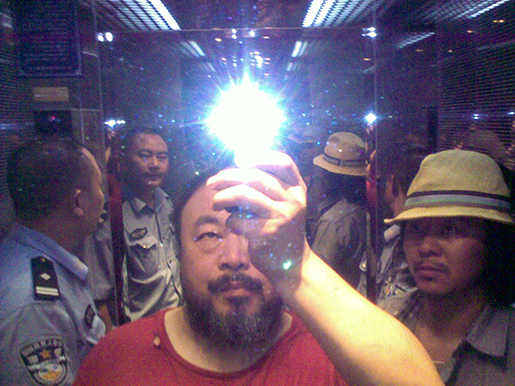"There’s no refugee crisis, but only human crisis… In dealing with refugees we’ve lost our very basic values" are words articulated by Ai Weiwei in response to the current humanitarian disaster. Ai Weiwei (1957) is the China’s best-known contemporary artist who received international recognition thanks to his innovative and provocative works.
In the grand hall, of National Gallery in Prague, there is a big inflatable boat with over life size figures of refugees accompanied by a big yellow ball in which the installation reflects. The artist thus showed his experience when he occurred on one of the refugee boats.
The humanitarian crisis has become especially dire since 2015 when the influx of refugees into Europe from Syria and elsewhere escalated dramatically. It has been described by the U.N. emergency relief coordinator Stephen O’Brien as ‘a slaughterhouse, a complete meltdown of humanity, the apex of horror’. During his visits to refugee camps on the Greek island of Lesvos, or at the border between Greece and FYROM, Ai Weiwei conceived a number of art projects devoted to the contemporary global odyssey while filming the documentary Human Flow which will premiere in 2017. A devastating document of forced displacement, the film is ‘a personal journey, an attempt to understand the conditions of humanity in our days’.
The exhibition is accompannied with his other works by Ai Weiwei. Laundromat (2016) is a subversive portrait of dispossession and displacement. With Flowers (2013–2015) presents Weiwei’s specific attempt at a commemorative self-portrait in times of confinement. Snake Ceiling (2009) is devoted to the 5,000 plus school children who lost their lives during a massive earthquake in China’s Sichuan province in 2008. Traveling Light (2007) is a reflection upon the past and its strength to project the future.
The National Gallery in Prague, at the time of its construction (completed in 1928), this was the largest building of its kind in the world and the first Functionalist building in Prague. Today it serves the needs of the National Gallery.






































